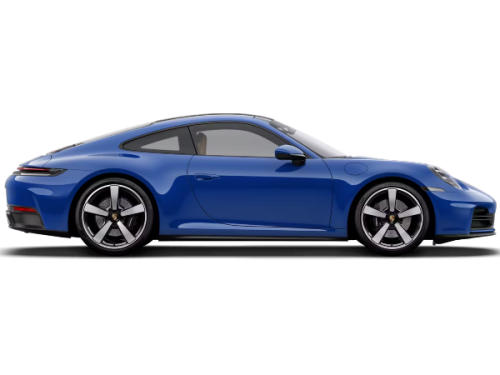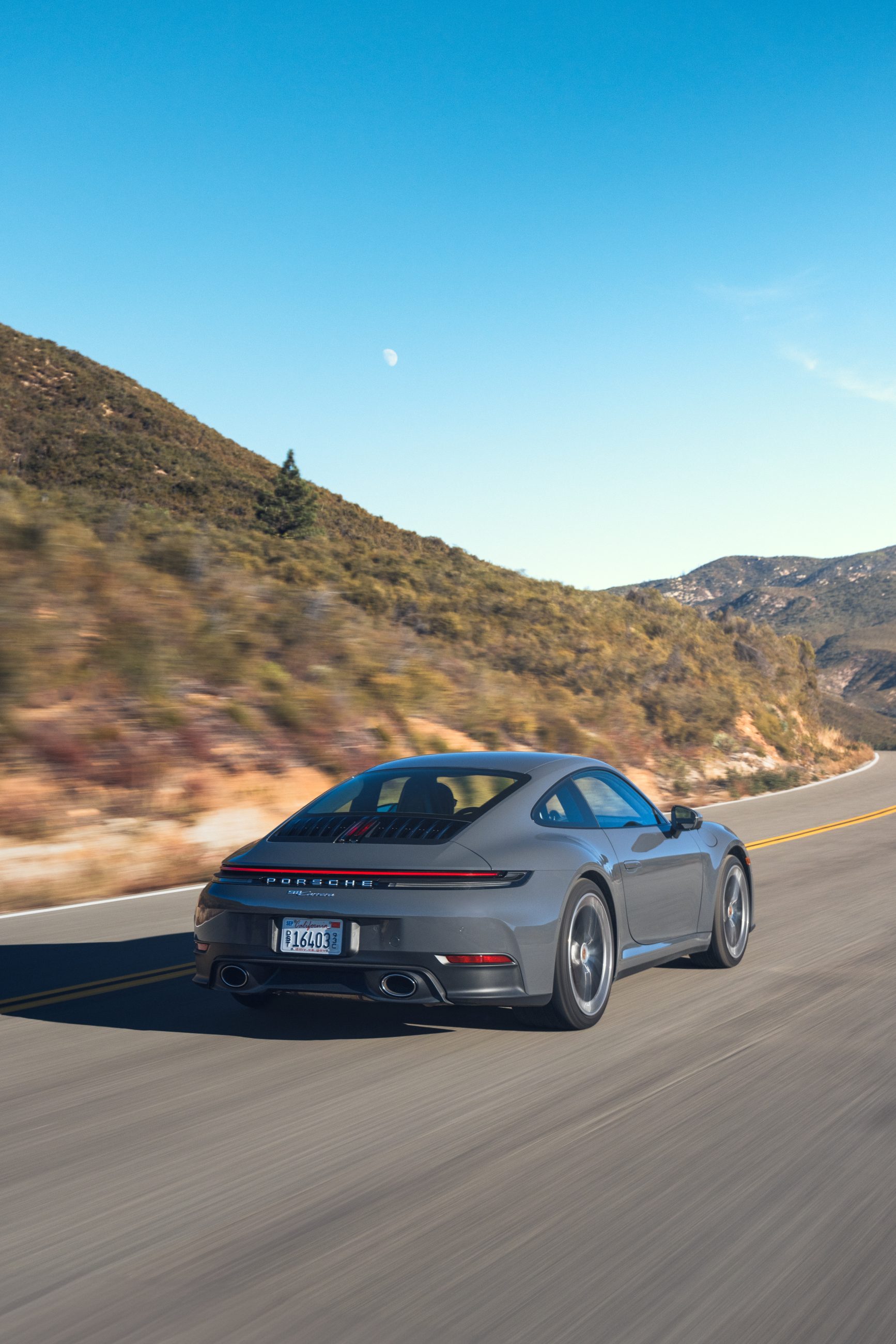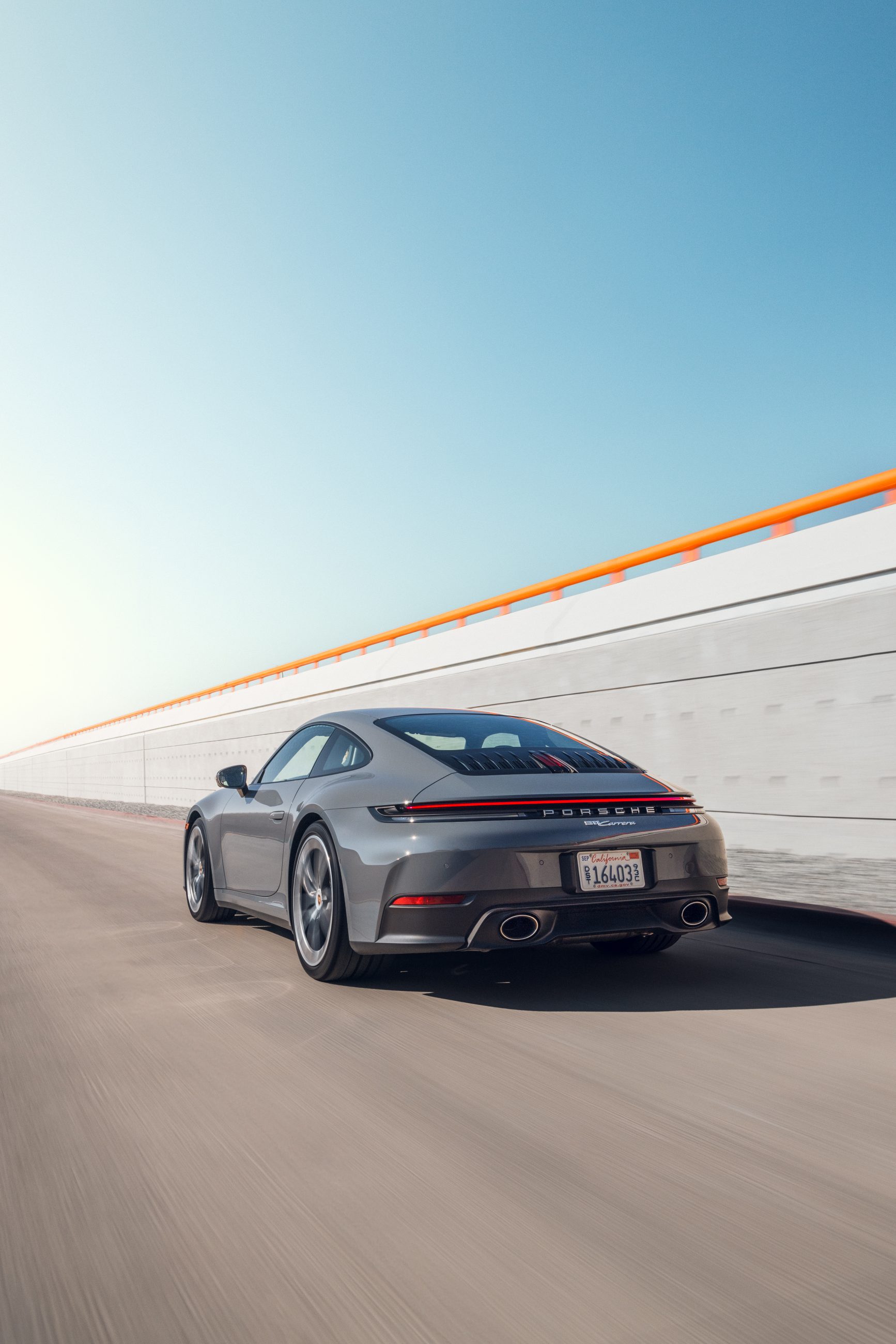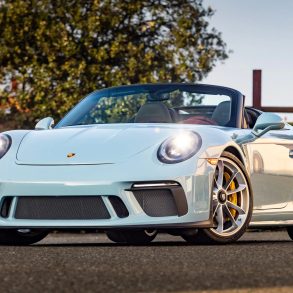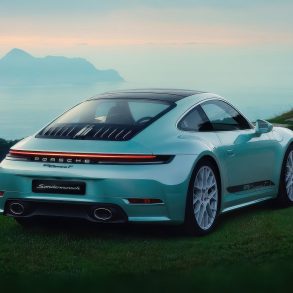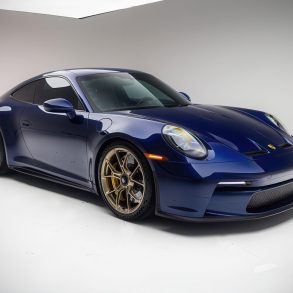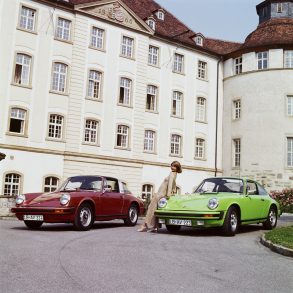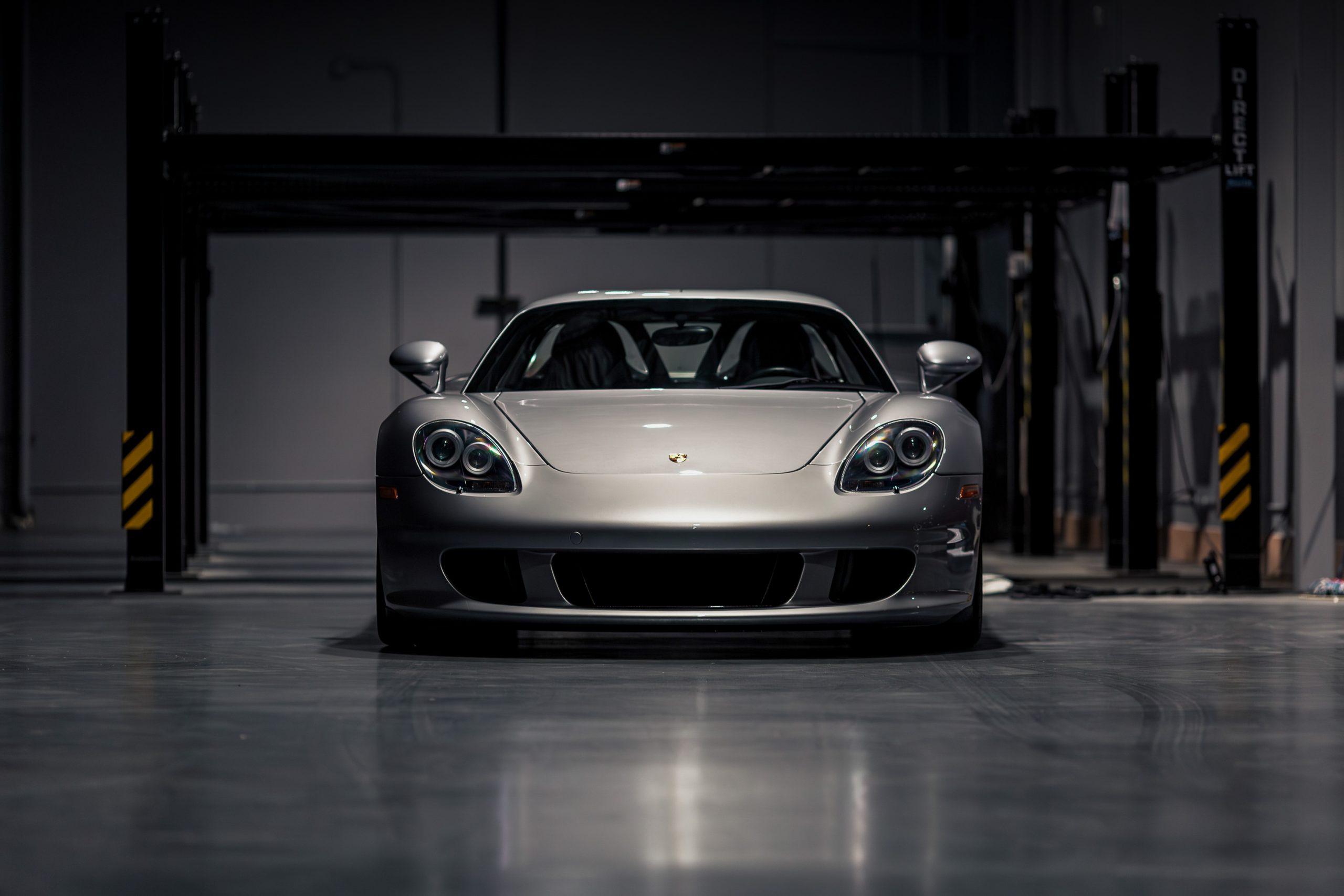Current Porsche 911 (992.2) Carrera Coupe – Reviews, Pricing, Specs & Buyers Guide
The 2025 Porsche 911 Carrera ushers in the 992.2 era with a careful mix of evolution and headline-grabbing change. While the new GTS variants go hybrid, the base Carrera stays resolutely combustion-only—yet gains meaningful hardware from up-range models, more standard equipment, and a cabin that moves fully digital. If you want a classic-feeling, rear-drive 911 that’s still at the technological forefront, this “least expensive” 911 is anything but basic.
Porsche revealed the refreshed 911 lineup on May 28, 2024, marking the 992.2 generation. The big headline was the T-Hybrid system on the Carrera GTS, but Porsche also confirmed a thorough update for the non-hybrid Carrera: new cooling hardware, larger turbochargers, a lightly higher output, aero and lighting revisions, and a fully digital cockpit. Crucially, the 2025 Carrera launches only as rear-wheel drive in Coupe or Cabriolet form; all-wheel drive returns higher up the ladder. U.S. deliveries began in fall 2024 for 2025-model cars.
Under the skin, Porsche relocated the intercooler above the engine (beneath the decklid grille) as on Turbo models and fitted larger turbochargers adapted from the previous-gen Carrera GTS. Output climbs to 388 hp (290 kW) and up to 331 lb-ft; Porsche’s own numbers improve slightly to 0–60 mph in 3.9 s (3.7 s with Sport Chrono) and 183 mph top track speed.
Powertrain & Performance
- Engine: 3.0-liter twin-turbo flat-six (updated hardware for 992.2)
- Output: 388 hp / 331 lb-ft (factory)
- Driveline: Rear-engine, rear-wheel drive, 8-speed PDK only
- Factory claims: 0–60 mph 3.9 s (3.7 s w/ Sport Chrono), 183 mph top track speed
Independent testing shows how much headroom still lives in a “base” 911. In instrumented testing, Car and Driver recorded 0–60 mph in 3.1 s, 11.4 @ 121 mph in the quarter, and 1.09 g on the skidpad—numbers that would have embarrassed supercars not long ago. Remarkably, they managed this on California 91-octane fuel, noting the revised turbos and intercooler as the key enablers.
MotorTrend’s first drive echoed the core story: no hybrid and no manual for the base car, a modest power bump, and the familiar, responsive character that lets a well-driven Carrera hang with faster trims on a technical circuit. The review also calls out the tidier, fog-lamp-free front bumper and the subtle exterior cleanup of the facelift.
Chassis, Dynamics & Tires
The 992.2 Carrera continues with the 992’s rigid structure, PASM-tuned damping (depending on spec), and mixed-diameter wheels: 19/20-inch standard with optional 20/21-inch designs, now including Exclusive Design wheels with carbon aeroblades to trim drag. Porsche emphasizes aero and cooling: all light functions move into the standard Matrix-design LED headlamps, freeing larger front air openings; an optional Aerokit brings a sharper front splitter and a fixed rear wing to reduce lift.
On the road, the subtle damper tuning tweaks make the 992.2 steer and ride with even more polish. Car and Driver found crisper turn-in and slightly improved grip compared to an early 992.1 test car (skidpad 1.09 g vs. 1.08 g), without sacrificing the trademark 911 compliance over broken pavement—even on the optional 20/21 setup.
Exterior Design: Streamlined Familiarity
Visually, Porsche stayed conservative. You’ll spot the 992.2 Carrera by:
- Clean front fascia: no standalone fog lamps; lighting consolidated into the headlamp units.
- Refreshed light bar: a thicker rear light band with integrated “PORSCHE” script.
- Decklid grille: five strakes per side, now reading as one visual unit with the rear glass.
- New wheel designs and the optional Aerokit for more overt intent.
MotorTrend notes the base Carrera does not get the hybrid GTS’s active aero shutters; the effect is a purer, simpler look. Top Gear likewise frames the facelift as a tidy cleanup that preserves the 911’s timeless presence.
Interior & Tech: Fully Digital, Still Driver-First
Inside, the 992.2 introduces a 12.6-inch fully digital instrument cluster for the first time in a 911, joining the 10.9-inch PCM screen. There’s now a start button (still on the left), a reworked steering-wheel switch layout, and deeper Apple CarPlay integration, including the ability to surface CarPlay information inside the cluster. Video streaming is available while parked, and login is simplified with a QR code.
A philosophical change: rear seats are deleted by default on Coupes (creating a standard two-seat 911), with the 2+2 configuration as a no-cost option. Reviewers are split on the digital cluster replacing the beloved analog tach, but most concede the display skins—including a classic five-dial view—soften the blow.
Trims, Pricing & Equipment (U.S.)
At launch, the U.S. lineup positioned the Carrera below the hybrid GTS range, with the Carrera Coupe starting at $120,100 MSRP (before the $1,995 delivery charge) and the Carrera Cabriolet at $133,400. Standard kit expands, including Matrix-design LED headlights and more convenience features. Porsche’s own release lays out the broader 2025 price ladder (GTS, Turbo, GT3 RS unchanged), underscoring the Carrera’s role as the entry point to the 911 family.
Model-Year Updates & The 992.2 Roadmap
2025 (launch year):
- Base Carrera updated (non-hybrid) with Turbo/GTS-derived cooling and turbos, +9 hp, interior digitization, cleaner aero/lighting.
- RWD only in Coupe/Cab for the base car; AWD reserved for higher trims at launch.
Beyond 2025:
Porsche has been steadily filling out the 992.2 range through 2025 and 2026 (e.g., Carrera S at 473 hp, and AWD 4S/Targa 4S joining for 2026). The pattern is classic Porsche: start with the bookends, then fill every niche. If you need AWD in a 992.2 with the non-hybrid engine, you’ll be looking above the base Carrera as the range expands.
How It Drives: The “Base” That Isn’t
On the road the Carrera remains the archetype: clean steering, transparent body motions, strong low-end response, and that distinct sense of rear-engine traction on corner exit. The 992.2 tweaks—especially the larger turbos/intercooler—contribute to unfussy real-world pace and improved efficiency. Car and Driver calls out stupendous acceleration (their 3.1-second 0–60) and lauds the ride/steering balance; MotorTrend praises the Carrera’s ability to keep up with faster trims when driven well, while noting the lack of a manual on the base car.
Top Gear’s broad 2025 review sums up the facelifted 911 neatly: the GTS hybrid is an “engineering nerd’s dream,” but the Carrera is still the simple-pleasures 911—now speedier, grippier and cleaner in look, if a touch less “mechanical” in personality thanks to the digitized dash and starter button.
Options & Packages That Matter (Carrera)
- Sport Chrono Package: Beyond launch control and the dash stopwatch, SC tightens the car’s character and typically improves testing numbers; Porsche’s own 0–60 claim drops to 3.7 s with SC.
- Sport Exhaust: Restores some theater to the twin-turbo soundtrack; C/D tested with it and liked the calibration.
- Wheels & Tires: The 20/21-inch option sharpens response and looks right; aero-blade Exclusive wheels are new for 992.2. If you track the car, consider a more aggressive street tire.
- Aerokit: Deeper front lip and fixed rear wing reduce lift; useful if you frequent high-speed circuits (and you like the look).
- Seats: Base seats are excellent; 14- or 18-way adjustables add long-haul comfort (with weight penalty). C/D’s test car ran the 18-ways.
- Rear Seats (No-cost): If you ever need 2+2 utility, don’t forget to tick the box—Coupes default to two seats now.
Buying Advice & Ownership Notes
- Spec sanity: Decide early whether you value track-day intent (Sport Chrono, Aerokit, bigger wheels) or grand-touring civility (standard wheels/tires, comfort seats). The 992.2 can do both; option creep is real.
- Manual lovers: The base Carrera has no manual; for three pedals you’ll be shopping Carrera T.
- AWD seekers: The entry AWD path in the refreshed range sits above the base Carrera for now; plan your trim accordingly as the 992.2 family fills out.
- Digital dash vs. tradition: If you’re attached to an analog tach, sit in one before ordering. The 12.6-inch cluster offers a “classic” look, but it’s still screens over needles. C/D and Top Gear both note the change.
- Running costs & range: EPA combined is 21 mpg; C/D observed 22 mpg and remind us the 911 can be startlingly frugal on highway slogs—especially with the extended-range 22.1-gal tank.
Reception: What the Press Is Saying
- Car and Driver: “All the 911 you need,” with supercar-adjacent numbers and improved ride/steering polish. Their gripe: rising base prices and the fully digital gauge pack.
- MotorTrend: Appreciates the cleaner front end and confirms the Carrera’s non-hybrid, PDK-only positioning; dynamically “balanced, poised,” and capable of punching above its weight on track days.
- Top Gear: The 911 remains the definitive sports car; the Carrera keeps the simple-pleasures brief while benefitting from a more refined 992.2 chassis and tidier styling—just remember to add the rear seats if you want 2+2 practicality.
Quick Specs (2025 911 Carrera, 992.2)
- Engine: 3.0-L twin-turbo flat-six
- Output: 388 hp / up to 331 lb-ft
- Transmission: 8-speed PDK (RWD only)
- 0–60 mph: 3.9 s (Porsche) / 3.1 s tested
- Top speed: 183 mph (track)
- EPA (est.): 21/18/25 mpg (comb/city/hwy)
- Seats: Two-seat standard; 2+2 no-cost option
- Base MSRP (U.S.): $120,100 Coupe; $133,400 Cabriolet (ex-dest.)
Verdict
The 992.2 Carrera is the distilled 911 experience: rear-drive balance, impeccable steering, a broad torque curve, and real-world speed that obliterates the “base model” label. The facelift’s exterior and aero tweaks are tasteful, the turbos/intercooler transplant provides easy pace, and the digital cabin—controversial or not—adds functionality while keeping the controls driver-centric. If you value simplicity, engagement, and everyday use, this is still the sweet spot of the range—and a brilliant gateway to the hybrid fireworks higher up. For shoppers deciding between trims, the calculus is simple: if you want maximum theater and straight-line shock, go hybrid GTS; if you want the 911’s core character at its purest and lightest in the 992.2 era, the Carrera is the one. And don’t be fooled by the name—on the right road, you’ll swear it’s anything but “base.”
Reviews & Videos
Pictures & Gallery
Press Release
News Release May 28, 2024
The 2025 Porsche 911 models
- 911 Carrera GTS: first ever production Porsche with innovative, lightweight T-Hybrid with newly developed 3.6 liter six-cylinder boxer engine, electrically driven
turbocharger and in-transmission electric motor - 911 Carrera receives updated 3.0-liter six-cylinder boxer engine
- New styling integrates active air intake flaps on 911 Carrera GTS
- Fully digital cockpit and further increased connectivity
Stuttgart. Porsche has significantly updated the latest generation of the iconic 911. The new 911 Carrera GTS is the first road-legal 911 model to feature a lightweight,
performance-focused hybrid powertrain, at the core of which is a newly developed engine displacing 3.6 liters. The new 911 Carrera GTS Coupe accelerates from 0 to 60 mph in 2.9 seconds – 0.3 seconds quicker than before – and on to a top track speed of 194 mph. The 911 Carrera has also been enhanced and will be available at launch powered by an updated version of the 3.0-liter twin-turbo boxer engine that is more powerful than before. In addition to their more powerful engines, the new 911 models feature new design, further improved aerodynamics, new colors, a fresh interior, enhanced standard equipment and more extensive connectivity.
Inspired by Motorsport: Innovative Performance-Hybrid
For the new 911 Carrera GTS models, the engineers utilized expertise developed in racing as the baseline for the concept of the hybrid system. “We developed and tested
various ideas and approaches to decide on a hybrid system that optimally suits the 911. The result is a unique powertrain that is well-integrated into the overall concept and enhances the performance significantly,” said Frank Moser, Vice-President of the 911 and 718 model lines.
A new, strengthened eight-speed dual-clutch transmission (PDK) with an integrated, permanently excited synchronous motor is part of the powertrain on the 911 Carrera GTS. It supplements the power of the boxer engine at idle with up to 110 lb.-ft. of torque and develops up to 40 kW.
The 911 GTS also uses a newly developed, electrically driven turbocharger. An integrated electric motor, placed between the compressor wheel and the turbine wheel, speeds up the turbocharger very quickly to develop boost. This electric motor in the turbocharger also functions as a generator and can develop up to 11 kW using the exhaust gas stream.
The electric turbocharger is not equipped with a wastegate and allows for the use of a single turbocharger compared to the two that were used previously while simultaneously improving throttle response and performance.
Both the electrically driven turbocharger as well as the electric motor housed in the transmission are paired with a light and compact high-voltage battery. Its size and weight are comparable to a conventional 12-volt AGM starter battery, but it can retain up to 1.9 kWh of energy (gross) and operates at 400 volts and is located under the front hood where the previous 12 volt battery was located. To optimize weight distribution, the 12 volt battery is a lightweight lithium-ion battery located behind the parcel shelf in the rear.
The heart of the T-Hybrid powertrain is a newly developed 3.6 liter boxer engine. Thanks to the high-voltage system, the compressor for the air conditioning system can be powered electrically, so there is no need for a belt drive, making the engine more compact. This provides for the room above the flat engine to house the pulse inverter and DC-DC converter. A bore increase to 97 millimeters and a stroke enlarged to 81 millimeters raise the displacement compared to previous 911 Carrera GTS models by 0.6 liters. The new engine features the camshaft adjustment system – VarioCam – and a valve control using roller rocker arms. It can retain the ideal combination of fuel and air (Lambda = 1) over the full range of engine speed.
By itself, the new boxer engine develops 357 kW (478 hp) and 420 lb.-ft. of torque. The total system power is 398 kW (532 hp) and 449 lb.-ft. The power increase compared to the previous 911 Carrera GTS models is 45 kW (59 hp). When accelerating, the new 911 Carrera GTS outperforms its predecessor in particular when starting off from a standstill. The efficient, performance-focused hybrid achieves a heightened level of performance without the level of weight increase typically associated with conventional hybrid systems. The U.S. curb weight increase of the new 911 Carrera GTS Coupe compared to the predecessor is a moderate 103 lbs.
The 911 Carrera continues to be powered by a 3.0 liter twin-turbo boxer engine, which has been significantly updated. It is now equipped with the intercooler used in the 911 Turbo models, which is placed above the engine directly beneath the rear decklid grille. The turbochargers of the new 911 Carrera were adopted from the previous 911 Carrera GTS models. With these modifications, the new 911 Carrera now makes 290 kW (388 hp) – 9 hp up on the model it replaces – and up to 331 lb.-ft. of torque. The 911 Carrera Coupe can accelerate from 0 to 60 mph in 3.9 seconds (3.7 seconds with optional Sport Chrono Package) and reach at top track speed of 183 mph. Compared to the previous model, this represents an improvement of 0.1 second and 1 mph, respectively.
Optimized suspension and active aerodynamics
The suspension of the 911 Carrera GTS was extensively updated as well. For the first time, rear axle steering is included as standard equipment. It optimizes the stability of the vehicle at higher speeds while simultaneously reducing the turning circle. The optional roll-stabilization system Porsche Dynamic Chassis Control (PDCC) is integrated into the high-voltage system of the performance hybrid. This allows for the use of an electro-hydraulic control system, making the system even more flexible and precise. A standard sport suspension with adaptive dampers (PASM) and a ride height reduction of 10 millimeters compared to the standard 911 Carrera offer a driving experience characteristic of GTS models.
A total of seven different wheel designs in 19-/20- or 20-/21-inch combinations are available for the new 911 Carrera models. For the first time, 911 Carrera Exclusive Design wheels are available with carbon fiber aeroblades, which can reduce the drag coefficient and optimize efficiency. At the rear axle, the 911 Carrera GTS models are equipped as standard with 21-inch wheels measuring 11.5 inches in width and fitted with 315/30 ZR 21 tires. At the front, 245/35 ZR 20 tires on 8.5 x 20-inch rims are mounted. At the rear, 10 mm wider tires compared to the previous model accommodate the increased power level of the new 911 Carrera GTS models, benefiting performance and traction.
Refreshed exterior design
Porsche has enhanced the exterior design of the new 911. A large part of these updates focuses on optimizing the aerodynamics and the performance of the sports car, including the new, model-specific front fascia. Furthermore, Porsche has integrated all of the light functions into the standard LED Matrix design headlights of the 911 with its characteristic four-point design. This allows for larger air intakes in the front fascia as the lights previously mounted in this area are now integrated into the headlights.
On the 911 Carrera GTS models, the front fascia incorporates five visible, vertically aligned active air flaps as well as a further flap which closes off the bypass on each side and is not visible from the exterior. They are complemented by adaptive front diffusors in the underbody, which are being used for the first time and work together with the cooling air flaps. These elements direct the air flow as needed: when little power is needed, closed air flaps optimize the aerodynamics of the car. When extracting high levels of power from the engine, for example on track, they funnel a high amount of air to the radiators. The sensors of the assistance systems are integrated into a high-gloss area below the front license plate mount.
The newly designed rear light band with “PORSCHE”-lettering enhances the impression of width and low stance of the car. A new rear decklid grille with five strakes per side forms a visible unit with the rear window and flows seamlessly into the automatically extending, variable rear spoiler. The rear license plate is mounted higher than before, and the rear fascia is simplified. Model-specific exhaust systems integrate elegantly into the pronounced diffusor fins. A sport exhaust system is optionally available for the 911 Carrera models, while the 911 Carrera GTS models are equipped with a GTS-specific sport exhaust system as standard.
An optional Aerokit is available to further increase performance of the 911 Coupe models. It includes a SportDesign front fascia with a unique front spoiler lip, special side skirts and a weight-optimized, fixed rear wing, all of which reduce lift.
Fully digital cockpit and extended connectivity
As standard, Porsche delivers the new 911 coupe models as a pure two-seater with no rear seats. Optionally, a 2+2 seat configuration is available for no additional cost. Inside, the traditional 911 design DNA is paired with modern technology: the Porsche Driver Experience offers an intuitive and quick operation of key functions that are central to the driver. Important functions are placed directly on or next to the steering wheel. This includes the standard drive mode switch, the updated control stalk to operate assistance systems and – for the first time in a 911 – a start button, placed, of course, to the left of the steering wheel. The storage compartment in the center console of the new 911 offers a cooled storage space for smartphones with an inductive phone charging area.
For the first time, the 911 features a fully digital instrument cluster. The 12.6-inch curved display integrates elegantly into the new operating and display concept and can be extensively customized depending on the driver’s preference. It offers up to seven different display views, including an exclusive classic display based on the historic five tube design with a centrally positioned tachometer which has been a hallmark of the 911 from the start.
The operation of the Porsche Communication Management (PCM) is still conducted using the high-resolution central display measuring 10.9 inches diagonally. Porsche has optimized the customization of drive modes and the operation of assistance systems in the new 911. Additionally, the updated models feature new connectivity functions. A QRcode makes logging in using the Porsche ID in the PCM easier. Apple CarPlay® is also integrated more deeply into the vehicle and information from the system can be displayed in the instrument cluster if desired, directly from within the Apple® ecosystem; for example via the voice assistant Siri®. For the first time, video streaming is offered as an option and available for use while the car is parked. Apps such as Spotify® and Apple Music® can be used as native apps in the PCM without connecting a smartphone.
Pricing and availability
The new 2025 911 Carrera is available to order now as a Coupe or Cabriolet with rearwheel drive. Additionally, the 2025 911 Carrera GTS is also available as a rear and allwheel drive model (911 Carrera GTS and 911 Carrera 4 GTS) in Coupe or Cabriolet form, and as a Targa variant (exclusively available with all-wheel drive). Both powertrains are fitted with PDK as standard. Deliveries of the new 2025 911 Carrera models to U.S. Porsche Centers are expected to start in the fall, and at the end of 2024 for the 911 Carrera GTS models. The current 911 Turbo, Turbo S and GT3 RS models will continue to be offered for the 2025 model year, with pricing unchanged for these variants.
The full list of Manufacturer’s Suggested Retail Pricing (MSRP) for the 2025 Porsche 911 model range is listed below. MSRP does not include tax, title, registration, dealer charges or a $1,995 delivery, processing and handling fee.
- 2025 Porsche 911 Carrera: $120,100
- 2025 Porsche 911 Carrera Cabriolet: $133,400
- 2025 Porsche 911 Carrera GTS: $164,900
- 2025 Porsche 911 Carrera GTS Cabriolet: $178,200
- 2025 Porsche 911 Carrera 4 GTS: $172,700
- 2025 Porsche 911 Carrera 4 GTS Cabriolet: $186,000
- 2025 Porsche 911 Targa 4 GTS: $186,000
- 2025 Porsche 911 Turbo: $197,200
- 2025 Porsche 911 Turbo Cabriolet: $210,000
- 2025 Porsche 911 Turbo S: $230,400
- 2025 Porsche 911 Turbo S Cabriolet: $243,200
- 2025 Porsche 911 GT3 RS: $241,300



